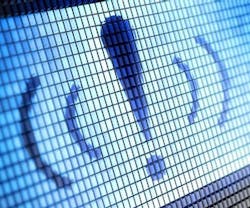When you review your list of mass notification channels – speakers, strobes, desktop popups, texts – is social media one of them?
You depend on flexible messaging solutions during a crisis to guarantee critical information reaches your occupants. Social media is just one of many avenues that ensures your alerts can be accessed quickly and repeatedly.
Join the Conversation
When a crisis unfolds, people typically verify emergency information against several sources before acting on the message, says John Von Thaden, vice president and general manager for Federal Signal, a mass notification provider. A social media presence will reinforce alerts that are already repeating across your other channels.
Social media also provides two-way communication. The ability to engage directly with those in harm's way can facilitate even greater levels of safety.
"By monitoring your social media streams, you can gauge the response to a crisis and interject helpful information when needed," Von Thaden explains. "This includes directing people to more complete details, updating instructions, and responding to questions."
Social media also allows you to manage any misinformation, as rumors can abound during a crisis and complicate an effective resolution. A well-timed status or tweet, however, acts as a voice authority.
Social Media Resources
Social media tools such as Facebook, Twitter (and by extension Tweetdeck), Google+, Instagram, and YouTube are commonly used to post updates during an emergency. To manage these separate accounts, look for dashboards that sync messages across the different feeds.
HootSuite: manages and measures multiple social networks.
IPAWS: an integrated public alert and warning system that draws on multiple national alerting systems.
Nixle: enables agencies and businesses to communicate in a secure way and exchange multimedia content over a trusted mobile platform.
Ushahidi: an open source project that allows users to crowdsource crisis information to be sent via mobile.
Code Red: a service that allows organizations to record, send, and track personalized messages to thousands of citizens in minutes.
Social Mention: a real-time search and analytics tool for social media.
"Understand that when a situation occurs, it can ramp up and evolve at unprecedented speed. You want to be able to reach your impacted audience quickly, efficiently, and frequently," says Denise Walker, chief emergency management officer for the Lone Star College System and ASIS member. "Social media allows you to be part of the story and, more importantly, helps you manage it."
Just a Click Away
The array of social media platforms has exploded in recent years, so first check with your public relations or communication department to see what your organization is currently using.
There are also a number of dashboards that can help you house all of your feeds under one roof (see resource list).
"Many mass notification solutions already have the capacity to integrate multiple communication channels," Walker says. "The key is designing your system with a strategic perspective from the ground floor up."
You can also set up procedures to post to individual platforms, use selective hashtags, or deploy prescripted messages during a crisis.
"Any use of messaging tools requires that the organization determine ahead of time the manner in which they're going to use them and the expectations for their use. Using social media for crisis communication is no different," notes Von Thaden. "You don't want to create a procedure during an emergency, only implement one you already have."
This is especially crucial as facility managers don't normally handle an organization's social media.
"Emergency managers need to have the authority to take control of communications during a crisis, working with whichever department normally oversees public relations," Walker stresses. "No message should be released without the incident commander's awareness and approval."
Make sure to post test messages periodically across your various platforms to ensure that there aren't any barriers. You can easily time these with other life safety exercises, such as testing fire alarms, sprinklers, and outdoor address systems.
Expand Your Reach
Compared to other life safety systems, social media will cost your organization very little as most platforms are free. But make sure to account for personnel and training costs so users can properly deploy emergency alerts and analyze the data, says Walker.
It's also important to recognize that social media has its limitations. Message length is abbreviated and people must be near a device to receive them. Even though social media can't replace traditional mass notification solutions, it will nonetheless broaden your reach.
"People expect to find information about emergencies on social media. To avoid this preference would be to miss an opportunity for communication," says Von Thaden. "If you're not part of the conversation, you don't have any opportunity to influence it."
Jennie Morton [email protected] is senior editor of BUILDINGS.
About the Author
Jennie Morton
A former BUILDINGS editor, Jennie Morton is a freelance writer specializing in commercial architecture, IoT and proptech.
